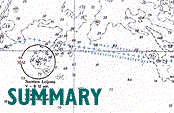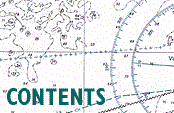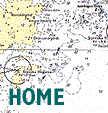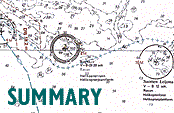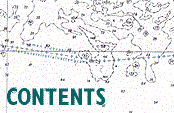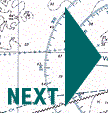 |
A Panel of Experts was set up within the International Maritime Organisation (IMO) shortly after the accident, with the task of investigating all aspects of safety related to ro-ro passenger vessels.
 The Panel reported to the Maritime Safety Committee (MSC) meeting in May 1995 and work proceeded further in preparation for a SOLAS Conference to be held at IMO headquarters in the last week of November 1995. The Panel reported to the Maritime Safety Committee (MSC) meeting in May 1995 and work proceeded further in preparation for a SOLAS Conference to be held at IMO headquarters in the last week of November 1995.
 The extensive proposals made to the Conference included controversial issues such as a requirement that all ro-ro passenger ships should be capable of maintaining positive stability in damaged condition with a quantity of water on the car deck corresponding to half a metre over the entire deck area. The extensive proposals made to the Conference included controversial issues such as a requirement that all ro-ro passenger ships should be capable of maintaining positive stability in damaged condition with a quantity of water on the car deck corresponding to half a metre over the entire deck area.
 Compliance with this requirement would involve extensive modifications to existing ferries and was found unacceptable to several IMO member states. The requirement was therefore not adopted. Compliance with this requirement would involve extensive modifications to existing ferries and was found unacceptable to several IMO member states. The requirement was therefore not adopted.
 The November 1995 Conference adopted a number of amendments to the SOLAS 1974 Convention. They entered into force on 1 July 1997. The amendments were based on proposals put forward by the Panel. The November 1995 Conference adopted a number of amendments to the SOLAS 1974 Convention. They entered into force on 1 July 1997. The amendments were based on proposals put forward by the Panel.
 The most important of the amendments are concerned with requirements for the bow doors and the stability of ro-ro passenger ships. The Conference agreed to significantly upgrade the damage stability requirement to be applied to all existing ro-ro passenger ships. The most important of the amendments are concerned with requirements for the bow doors and the stability of ro-ro passenger ships. The Conference agreed to significantly upgrade the damage stability requirement to be applied to all existing ro-ro passenger ships.
 A new regulation II-1/8-1 will require existing ro-ro passenger ships to comply fully with SOLAS 90 in accordance with an agreed phase-in programme, which will depend on the ship's damage stability index (A/Amax value). A new regulation II-1/8-1 will require existing ro-ro passenger ships to comply fully with SOLAS 90 in accordance with an agreed phase-in programme, which will depend on the ship's damage stability index (A/Amax value).
 A new regulation II-1/8-2 was also adopted which contains special requirements for ro-ro passenger ships carrying 400 passengers or more. This is intended either to require that new ships to be built, and existing ships already built, to a one-compartment-flooded standard should be phased out; or to ensure that they can survive with two compartments flooded following damage. A new regulation II-1/8-2 was also adopted which contains special requirements for ro-ro passenger ships carrying 400 passengers or more. This is intended either to require that new ships to be built, and existing ships already built, to a one-compartment-flooded standard should be phased out; or to ensure that they can survive with two compartments flooded following damage.
 Other amendments to Chapter II-1 deal with such issues as extending the collision bulkhead, keeping doors that do not comply with Convention provisions closed during navigation, the strength of ventilation trunks penetrating the bulkhead deck, and the positions of the ends of air pipes. The upper extension of a collision bulkhead must be so arranged as to preclude the possibility of a bow door causing damage to it in the case of damage to, or detachment of, the door. Other amendments to Chapter II-1 deal with such issues as extending the collision bulkhead, keeping doors that do not comply with Convention provisions closed during navigation, the strength of ventilation trunks penetrating the bulkhead deck, and the positions of the ends of air pipes. The upper extension of a collision bulkhead must be so arranged as to preclude the possibility of a bow door causing damage to it in the case of damage to, or detachment of, the door.
 Three new regulations added to Chapter II-1 deal with watertight integrity from the ro-ro deck (bulkhead deck) to spaces below, access to ro-ro decks when the ship is under way (when they are to be banned to passengers) and closure of bulkheads on the ro-ro deck. Three new regulations added to Chapter II-1 deal with watertight integrity from the ro-ro deck (bulkhead deck) to spaces below, access to ro-ro decks when the ship is under way (when they are to be banned to passengers) and closure of bulkheads on the ro-ro deck.
 Regulation II-1/23-2, which deals with the integrity of the hull and superstructure, damage prevention and control, has been completely replaced. Regulation II-1/23-2, which deals with the integrity of the hull and superstructure, damage prevention and control, has been completely replaced.
 Indicators shall be provided on the navigation bridge for all shell doors, loading doors and other closing appliances for doors which, if left open, could lead to flooding of ro-ro cargo space. Indicators shall be provided on the navigation bridge for all shell doors, loading doors and other closing appliances for doors which, if left open, could lead to flooding of ro-ro cargo space.
 Television surveillance and water leakage detection systems shall be arranged to provide an indication to the navigation bridge and to the engine control station of any leakage through inner and outer bow doors, stern doors or any shell doors which could lead to flooding of ro-ro cargo spaces. Television surveillance and water leakage detection systems shall be arranged to provide an indication to the navigation bridge and to the engine control station of any leakage through inner and outer bow doors, stern doors or any shell doors which could lead to flooding of ro-ro cargo spaces.
 Amendments have also been made to Chapter II-2. A new regulation II-2/28-1 deals with escape routes on ro-ro passenger ships. It introduces requirements for handrails in corridors along escape routes. The routes must not be obstructed. For ships constructed on or after 1 July 1997 the lower part of bulkheads along escape routes must be strengthened so that the bulkheads can be walked upon safely when the ship is at a large angle of heel. Amendments have also been made to Chapter II-2. A new regulation II-2/28-1 deals with escape routes on ro-ro passenger ships. It introduces requirements for handrails in corridors along escape routes. The routes must not be obstructed. For ships constructed on or after 1 July 1997 the lower part of bulkheads along escape routes must be strengthened so that the bulkheads can be walked upon safely when the ship is at a large angle of heel.
 The amendments to Chapter III, which deals with life-saving appliances and arrangements, include a number of important additions. Requirements for liferafts are more stringent. Liferafts must be served by marine evacuation systems and must be automatically self-righting, or be of the canopied reversible type capable of operating safely whichever way up. The amendments to Chapter III, which deals with life-saving appliances and arrangements, include a number of important additions. Requirements for liferafts are more stringent. Liferafts must be served by marine evacuation systems and must be automatically self-righting, or be of the canopied reversible type capable of operating safely whichever way up.
 Ro-ro passenger ships will be required to carry at least one fast rescue boat. The ships must also be fitted with means for recovering survivors from the water and transferring them from rescue units to the ship. Ro-ro passenger ships will be required to carry at least one fast rescue boat. The ships must also be fitted with means for recovering survivors from the water and transferring them from rescue units to the ship.
 Sufficient numbers of lifejackets will have to be provided near the assembly station. Each lifejacket shall be fitted with a light. Some of the above mentioned amendments to Chapter III will not be required on existing ships until 1 July 2000. Sufficient numbers of lifejackets will have to be provided near the assembly station. Each lifejacket shall be fitted with a light. Some of the above mentioned amendments to Chapter III will not be required on existing ships until 1 July 2000.
 New regulation III/24-2 covers information to passengers. New regulation III/24-2 covers information to passengers.
 By regulation III/24-3, all ro-ro passenger ships shall be provided with a helicopter pick-up area, on ships constructed before 1 July 1997 to apply latest from the first periodical survey after that date. Passenger ships of 130 m of length and upwards, constructed by or after 1 July 1997, shall from 1 July 1999 be fitted with a helicopter landing area. By regulation III/24-3, all ro-ro passenger ships shall be provided with a helicopter pick-up area, on ships constructed before 1 July 1997 to apply latest from the first periodical survey after that date. Passenger ships of 130 m of length and upwards, constructed by or after 1 July 1997, shall from 1 July 1999 be fitted with a helicopter landing area.
 A number of amendments have been made to Chapter IV dealing with radio communications. A distress panel is to be fitted at the conning position. This is to enable a distress alert to be given by pressing a single button. All passenger ships are to be provided with means for two-way, on-scene radio communications for SAR purposes using the aeronautical frequencies. At least one properly qualified person will have to be assigned to perform only radio communication duties during distress incidents. A number of amendments have been made to Chapter IV dealing with radio communications. A distress panel is to be fitted at the conning position. This is to enable a distress alert to be given by pressing a single button. All passenger ships are to be provided with means for two-way, on-scene radio communications for SAR purposes using the aeronautical frequencies. At least one properly qualified person will have to be assigned to perform only radio communication duties during distress incidents.
 Chapter V (safety of navigation) has also been amended. Chapter V (safety of navigation) has also been amended.
 Obligations and procedures in the event of emergencies have been clarified, a working language is to be established on passenger ships and ships trading on fixed routes must carry a plan for co-operation with appropriate SAR services. Obligations and procedures in the event of emergencies have been clarified, a working language is to be established on passenger ships and ships trading on fixed routes must carry a plan for co-operation with appropriate SAR services.
 A new regulation 23 deals with operational limitations, such as restrictions in operating areas, weather restrictions, sea state conditions, limits on permissible loads, speed and other factors. The list of all such limitations shall be documented and kept on board readily available to the master. A new regulation 23 deals with operational limitations, such as restrictions in operating areas, weather restrictions, sea state conditions, limits on permissible loads, speed and other factors. The list of all such limitations shall be documented and kept on board readily available to the master.
 Chapter VI (carriage of cargoes) has been amended to require cargo units to be loaded, stowed and secured in accordance with a Cargo Securing Manual. Chapter VI (carriage of cargoes) has been amended to require cargo units to be loaded, stowed and secured in accordance with a Cargo Securing Manual.
 In addition to the amendments, the Conference adopted 13 resolutions. Many of them are designed to assist implementation of the amendments adopted by the Conference. In addition to the amendments, the Conference adopted 13 resolutions. Many of them are designed to assist implementation of the amendments adopted by the Conference.
 Five resolutions concerning the safety of ro-ro passenger ships were adopted by the IMO Assembly in November 1995, which was run prior to the SOLAS Conference. Five resolutions concerning the safety of ro-ro passenger ships were adopted by the IMO Assembly in November 1995, which was run prior to the SOLAS Conference.
 Resolution A.793(19) is concerned with the strength and the securing and locking arrangement of shell doors on ro-ro passenger ships. It notes that the International Association of Classification Societies (IACS) Unified Requirement for Bow Doors (as amended in 1995) will apply not only to new ro-ro passenger ships but retrospectively to existing ships as well. Resolution A.793(19) is concerned with the strength and the securing and locking arrangement of shell doors on ro-ro passenger ships. It notes that the International Association of Classification Societies (IACS) Unified Requirement for Bow Doors (as amended in 1995) will apply not only to new ro-ro passenger ships but retrospectively to existing ships as well.
 In 1996 IACS reviewed its Unified Requirement for Side Shell Doors and Stern Doors with retrospective application to existing ro-ro passenger ships. In 1996 IACS reviewed its Unified Requirement for Side Shell Doors and Stern Doors with retrospective application to existing ro-ro passenger ships.
 As seven countries were dissatisfied with the Conference rejection of the proposed new stability requirements dealing with water on car deck, two meetings of parties requiring more stringent regional regulations were held in Stockholm in January and February 1996. Nineteen countries participated. As seven countries were dissatisfied with the Conference rejection of the proposed new stability requirements dealing with water on car deck, two meetings of parties requiring more stringent regional regulations were held in Stockholm in January and February 1996. Nineteen countries participated.
 The meetings agreed on specific requirements for the capability of the ferry to maintain stability with water on the car deck. The quantity of water on deck is dependent on residual freeboard after damage, on significant wave height and on variable angle of list at the damaged side of the ferry. The meetings agreed on specific requirements for the capability of the ferry to maintain stability with water on the car deck. The quantity of water on deck is dependent on residual freeboard after damage, on significant wave height and on variable angle of list at the damaged side of the ferry.
 The Stockholm meetings adopted a proposed Agreement. By 25 September 1996 seven states had become parties and the Agreement entered into force on 1 April 1997. The Stockholm meetings adopted a proposed Agreement. By 25 September 1996 seven states had become parties and the Agreement entered into force on 1 April 1997.
 In accordance with this Agreement, specific stability requirements shall apply to all ro-ro passenger ships undertaking regular scheduled international voyages between designated ports in North West Europe and the Baltic Sea, irrespective of flag. No more favourable treatment should be given to ships entitled to fly the flag of states non-parties to the Agreement. Ro-ro passenger ships shall comply with the provisions of the Agreement not later than dates varying from 1 April 1997 to 1 October 2002 depending on the ship's damage stability index (A/Amax). In accordance with this Agreement, specific stability requirements shall apply to all ro-ro passenger ships undertaking regular scheduled international voyages between designated ports in North West Europe and the Baltic Sea, irrespective of flag. No more favourable treatment should be given to ships entitled to fly the flag of states non-parties to the Agreement. Ro-ro passenger ships shall comply with the provisions of the Agreement not later than dates varying from 1 April 1997 to 1 October 2002 depending on the ship's damage stability index (A/Amax).
 In July 1995 the Conference of Parties to the International Convention on Standards of Training, Certification and Watchkeeping of Seafarers (STCW) 1978, adopted amendments to the STCW Annex. In July 1995 the Conference of Parties to the International Convention on Standards of Training, Certification and Watchkeeping of Seafarers (STCW) 1978, adopted amendments to the STCW Annex.
 The 67th session of the MSC in December 1996 approved additional amendments to the STCW Convention and Code. The 67th session of the MSC in December 1996 approved additional amendments to the STCW Convention and Code.
 These amendments require crisis management and human behaviour training for masters, officers, ratings and other personnel on ro-ro passenger vessels. These amendments require crisis management and human behaviour training for masters, officers, ratings and other personnel on ro-ro passenger vessels.
 |
 |


